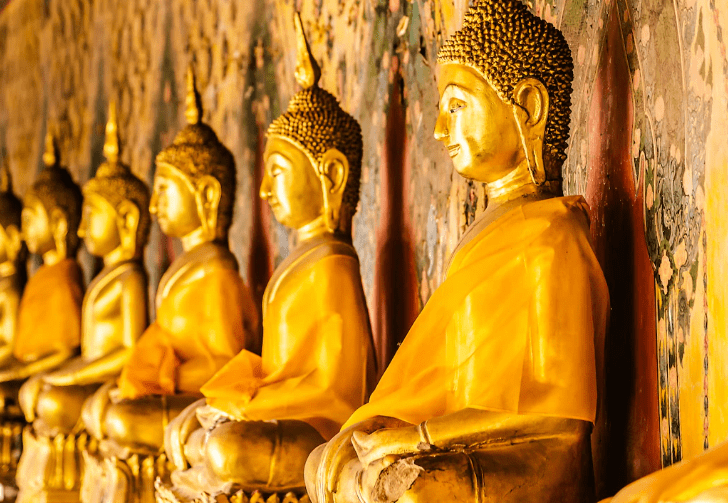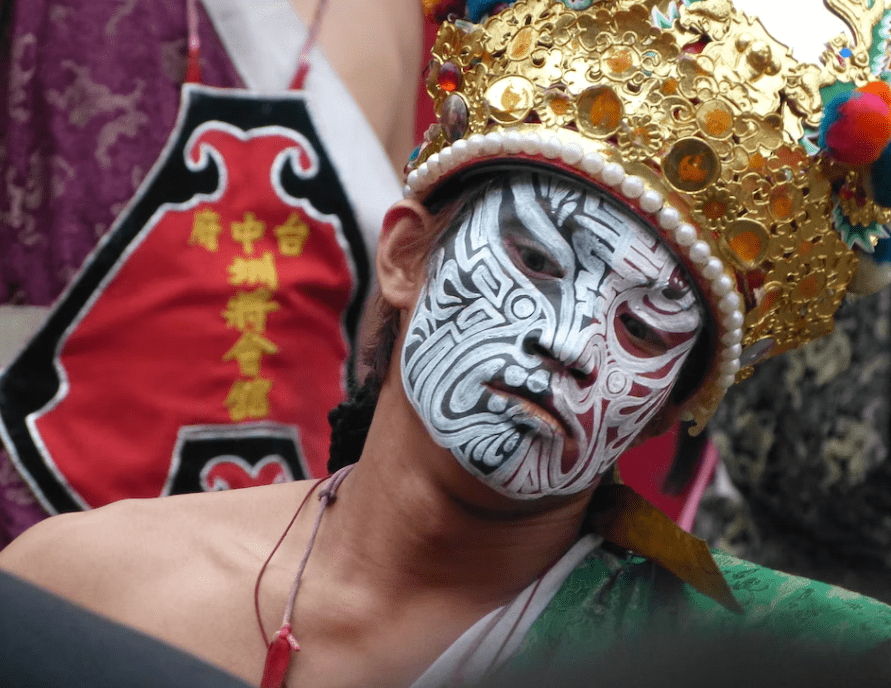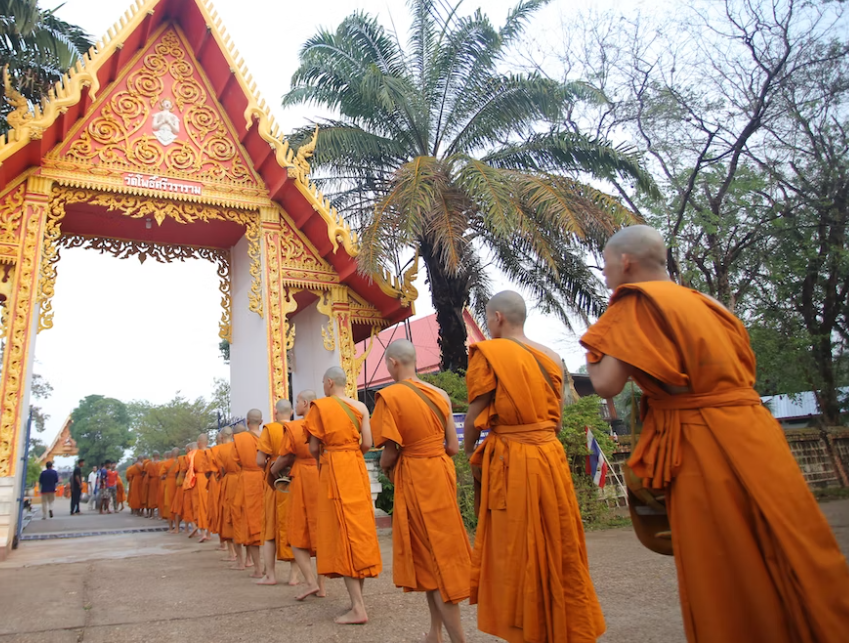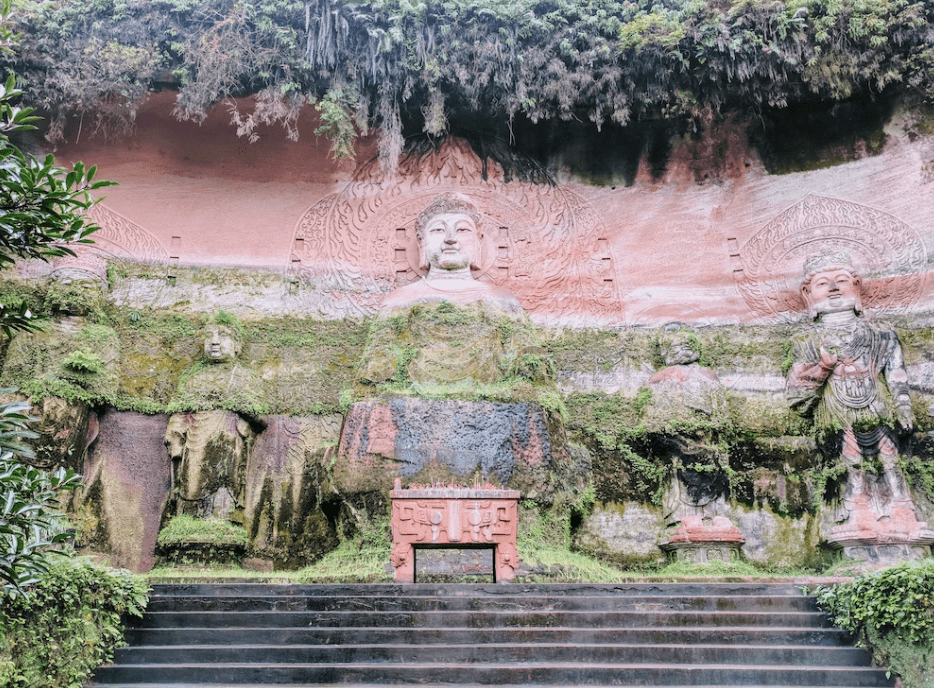Where Meditation Started
Learn about the origins of meditation and its religious roots.

Selfpause Affirmation App
Download the app to get 1,000’s of affirmation meditations and everything you need to write, record and listen to your own.
While the history of meditation is complex, there are a few common threads that run through it. It has religious roots in ancient Egypt, China, Hinduism, Sikhism, and Buddhism. It first spread around the world along the Silk Road, where it was adopted by many people. From there, it gradually adapted to new cultures. In the 20th century, the concept of meditation started to move away from specific religions and toward a more universal practice.
Buddhism

In the past few centuries, Buddhism has been credited with the development of meditation and mindfulness. The popularity of meditation in Western culture owes much to its roots in Asia, and Buddhism helped modernize the concept. Western scientists have a long history of studying meditation, and many of them have begun their own meditation practice. Their research on mindfulness practices is often based on their own personal experiences and the use of science to legitimize their own practices.
In the early centuries, meditation was practiced by Hindus, and it was soon adopted by other Asian countries and eventually became part of many religions. By the 12th century, the practice was widely spread. In India, the practice grew to include religious practices like Vedantism. In this tradition, sacred words and heavy breathing were used as the basis for meditation.
Today, meditation is widely practiced for its therapeutic benefits, and it is often used by professional mental health workers to improve mental health and performance. In today’s world, it’s used to overcome phobias, improve concentration, and promote self-awareness. The Buddha’s insights into the human mind have helped people today as much as they did in ancient times.
Taoism

The Chinese folk religion Taoism has its roots in the philosophy of the Three Jewels of the Tao. This belief emphasizes the reverence for immortals, as well as the importance of respecting nature. Taoism is also the source of many arts and disciplines, including Chinese martial arts and Feng Shui. Other aspects of Taoism are Buddhism, which is the world’s fourth-largest religion, and Chinese alchemy, which was first practiced by the Chinese people.
The first recorded mention of meditation in the world was found in the Vedas, a large body of religious texts. Siddhartha Gautama, the Buddha of India, was known to have learned meditation during his journey to Enlightenment. The practice of meditation also spread to Japan after Buddhism entered the country. It is also found in the Eastern Orthodox Church, where a tradition of contemplative prayer called Hesychasm is practiced. It involves repeated repetition of the Jesus prayer. It is also an important element of Sufism.
The ancient Chinese texts of Taoism and Buddhism discuss meditation practices and the practices of the inner gods. Both have similar beliefs, and the practice of meditation has roots in both traditions. The ancient Chinese text Huangting jing explains how to visualize the sun and moon and how to activate the Yunus Yu Nu (Inner Light) by visualizing the sun and moon.
Sufism

Sufi meditation has its roots in the Islamic mysticism of Sufism. Its aim is to attain spiritual purity and the dissolution of the ego. This dissolution allows one to meet God, the ultimate object of meditation. In a sense, this state is similar to the Buddhist Nirvana. However, the Sufi way is far more rigorous and requires much more focus than other forms of meditation.
According to Sufism, our physical senses are illusions, and true reality is experienced through the second set of senses. In some Sufi traditions, the second set of senses can roam freely and experience the entire world. In other Sufi traditions, a dervish can experience the Noble Connection to Allah.
The early Sufi mystics followed their mystical passion and taught as they lived. There was no formal mystical doctrine at this time, though it developed as time went on. The thirteenth century saw the golden age of Sufism. Its founder, Spanish-born Ibn al-Arabi, developed a mystical system dealing with God and the world. He also wrote some of the finest Arabic mystical poetry.
Sufism is a pious movement that originated in the early Umayyad period. It was developed as a reaction to the worldliness of the time. The Sufi ascetics would meditate on the Qur’an and contemplate the meaning of Doomsday and would often become known as “those who weep all the time.” They regarded the world as a hut of sorrows, and the only way out of it was through prayer.
Buddhist monks

During the Middle Ages, meditation developed into many different religious traditions. This includes Buddhist, Jewish, Hindu, and Jain meditation. In the 18th century, the ancient teachings of meditation found a greater audience in the West, especially with the publication of the Tibetan Book of the Dead. This tradition of contemplative prayer spread throughout the Eastern Orthodox Church, resulting in the development of the Vipassana movement. In the 1950s, a Western book based on a Buddhist suite, called “The Dharma Bums” was published.
The practice of Buddhist meditation is a form of mental concentration that leads to spiritual freedom. It occupies a central place in Buddhist praxis and incorporates the discipline of increased introversion with the insight gained through wisdom. During meditation, practitioners place a focus on an object called a kammatthana, which may vary from person to person. Some monks use devices to aid in their concentration.
Meditation spread from China to the West through the Silk Road. In the 3rd century, Plotinus described meditative techniques. However, these methods were not easily integrated into Christian beliefs. In the 6th century, Japanese monk Dosho introduced the practice of Zen to Japan. As a result, the practice grew dramatically in Japan. The word “meditation” comes from the Latin word meditate, which means to ponder. In the 12th century, Guigo II introduced the term to the West.
American yogis

The first American yogis began practicing meditation in the 1950s, led by Indian-born Swami Vishnu-Sivananda, who came to America as a Harvard professor. He wrote a book, “Be Here Now,” that has become an essential guide for many meditators. He also founded the Sivananda Yoga Vedanta Centers in Montreal, which is one of the largest yoga schools in the world. In the 1980s, another group of American yogis took yoga to a new level, led by the Maharishi Mahesh Yogi, who established the Transcendental Meditation empire, which has over one thousand centers in 108 countries.
In the early twentieth century, the United States immigration service imposed a quota on Indian immigrants, making it difficult for Easterners to come to America for yogic instruction. Thus, many Westerners were forced to travel to India for yogic teachings. This led to the development of posture-based forms of yoga. Swami Kuvalayananda helped frame yoga as medical science.
Ali’s early explorations of the Philosophy of Mind included exploring Sufism, Orthodox Islam, and the Nation of Islam. After practicing mainstream Western mindfulness for about 15 years, he felt disillusioned with the practice of meditation. He preferred quiet centers where he could be in solitude, away from the distractions of the city.
Buddhist centers

Meditation is an ancient practice found in a variety of religious traditions, but the most popular is Buddhism. The Buddha, who lived in Southeast Asia around 2600 years ago, established a path of experience that inspired generations to sit in mindful awareness and breathe their way to lasting peace. His teachings include meditative concentration, the three pieces of training for awakening, and the importance of good ethics and wisdom.
The New York Insight Center, a nonprofit mindfulness and meditation center, has a variety of programs to help people develop their practice. These include daylong retreats, evenings with renowned meditation teachers, and ongoing classes. The programs are designed for both beginning and experienced meditators. In Madison, the Wisconsin Insight Meditation Group offers a variety of meditation techniques for all levels of experience.
Buddhist centers where meditation started have a tradition of teaching various types of meditation. The practice is usually centered on the path of a Bodhisattva, which aspires to full Buddhahood. The practice is also centered around developing a sense of mindfulness, which is a practice of remembering and bearing in mind Buddha’s teachings. There are different forms of mindfulness practice, including chanting and praying.
Our Top FAQ's
The origin of meditation is difficult to trace definitively, as the practice has been a part of various cultures and religious traditions for thousands of years. However, it is generally believed to have originated in India, with roots in Hinduism, Buddhism, and Jainism.
Some of the earliest known practices and traditions of meditation can be traced back to Hinduism, where the practice was used to cultivate concentration and tranquility. In Buddhism, meditation was used as a means to gain insight into the true nature of reality and to achieve enlightenment. In Jainism, meditation was used as a tool for self-purification and to cultivate virtues such as compassion and non-violence.
Over time, the practice of meditation has evolved and been adapted in different cultures and religious traditions. In many cases, the basic principles and goals of meditation have remained largely the same, but the specific techniques and practices used have varied. For example, in some traditions, meditation may involve focusing on the breath or a mantra, while in others it may involve visualization or mindfulness practices.
There are many different types of meditation, and they can differ in their goals, techniques, and intended outcomes. Some common types of meditation include mindfulness meditation, focused attention meditation, and transcendental meditation. Each of these types of meditation has its own unique characteristics and may be better suited to certain individuals or purposes than others.
The benefits of meditation are numerous and varied, and have been traditionally used for a wide range of purposes. Some of the potential benefits of meditation include reducing stress and anxiety, improving concentration and focus, promoting emotional well-being, and enhancing overall physical health. In many religious traditions, meditation is also used as a means to achieve spiritual growth and enlightenment.
